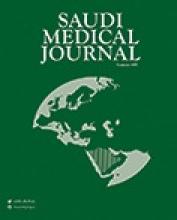Abstract
OBJECTIVE: To study the comparison between the primary closure and open technique after excision of chronic sacrococcygeal pilonidal sinus.
METHODS: A randomized study was designed and 77 patients with chronic sacrococcygeal pilonidal sinus were included in this study. This study took place in Rizgary Teaching Hospital, Erbil, Kurdistan, Iraq, from January 1997 to August 2003. The patients were separated into 2 groups; Group A (37 patients) were treated by open method (excision and healing by secondary intention) and Group B (40 patients) for whom primary midline suturing was performed after excision of the pilonidal sinus. The follow up ranged from 1.5-5.5 years (mean 4.16) was through outpatient visits.
RESULTS: The Student t test was applied for statistical analysis for the operating time, hospital-stay, time off from work and wound healing time; and the results show extremely significant differences between the 2 groups (p<0.0001). The statistical analysis of the total number of postoperative complications of both techniques showed a significant difference (p=0.0401), while the differences were insignificant for each complication when analyzed separately.
CONCLUSION: Excision and primary closure for chronic sacrococcygeal pilonidal sinus is superior to excision and healing by secondary intention. We believe that primary midline suturing is a useful method for management of chronic sacrococcygeal pilonidal sinus.
- Copyright: © Saudi Medical Journal
This is an open-access article distributed under the terms of the Creative Commons Attribution-Noncommercial License (CC BY-NC), which permits unrestricted use, distribution, and reproduction in any medium, provided the original work is properly cited.






